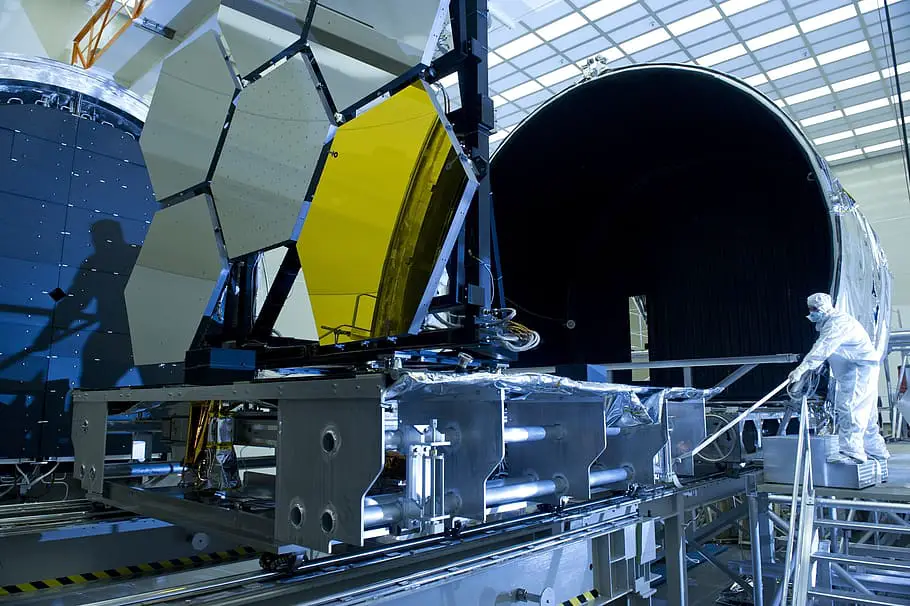When it comes to deciphering the riddles of the universe, cutting-edge technology is a critical factor to consider. The James Webb Space Telescope, also known as the JWST, is one of the most impressive accomplishments in the field of space exploration. The James Webb Space Telescope (JWST), which will replace the Hubble Space Telescope, is expected to shed new light on the mysteries of the cosmos. In this piece, we will delve into the fascinating world of the James Webb Space Telescope (JWST) and investigate the sort of light that it employs in order to acquire amazing photographs and important scientific data.
A New Era of Exploration The James Webb Space Telescope (JWST) is the product of an ambitious partnership between the European Space Agency (ESA), the Canadian Space Agency (CSA), and NASA. This ground-breaking telescope, which is scheduled for flight in 2021, has been built to function in extremely frigid temperatures, much colder than any other space observatory that has come before it. The primary purpose of the James Webb Space Telescope is to investigate the origins of the cosmos, including the birth of galaxies and stars, as well as the possibility of locating habitable habitats outside the solar system.
The Secret to Revealing Hidden Things Is Found in Infrared Light: In contrast to its predecessor, the Hubble Space Telescope, which mostly focused on observing visible and ultraviolet light, the James Webb Space Telescope (JWST) is designed to capture infrared radiation. Because of this one-of-a-kind feature, the telescope is able to see past the cosmic dust clouds that obscure its view and observe more distant objects with higher clarity.
Why Should We Use Infrared Light? The wavelengths of electromagnetic energy that make up infrared light are significantly longer than those of visible light. By monitoring the cosmos in the infrared section of the electromagnetic spectrum, the James Webb Space Telescope (JWST) is able to shed light on astronomical occurrences that would not be seen using any other method. Infrared light contains important data that can be used to learn about the early stages of the cosmos, such as the creation of stars and the construction of galaxies. It can also be used to discover and investigate extrasolar planets and the atmospheres that surround them.
The Advanced Instrumentation of the James Webb Space Telescope: The James Webb Space Telescope has a collection of scientific equipment that were developed to make the most of its ability to observe in the infrared spectrum. The following is a list of the four key instruments that will assist researchers in deciphering the mysteries of the universe:
- Near Infrared Camera (NIRCam): The NIRCam will serve as the principal imaging equipment aboard the James Webb Space Telescope. It functions at wavelengths ranging from 0.6 to 5 microns, which allows it to operate in the visible as well as the near-infrared sections of the electromagnetic spectrum. Astronomers will be able to take magnificent photographs of faraway galaxies, star-forming regions, and extrasolar planets with the help of this powerful camera.
- Near Infrared Spectrograph (NIRSpec): The NIRSpec is a flexible spectrograph that separates light into its component wavelengths in order to provide insights into the chemical composition, temperature, and velocity of astronomical objects. It examines objects with wavelengths ranging from 0.6 to 5.3 microns, making it possible to conduct in-depth studies of things like galaxies and star clusters.
- Mid-Infrared Instrument (MIRI): MIRI is the JWST’s camera and spectrograph for the mid-infrared wavelength range. MIRI will investigate the formation of stars and planets, as well as faraway galaxies and objects obscured by dust, using wavelengths that range from 5 to 28.5 microns. In addition to this, it will be a significant contributor to the process of defining the atmospheres of extrasolar planets.
- Fine Guidance Sensor/Near InfraRed Imager and Slitless Spectrograph (FGS/NIRISS): The FGS/NIRISS combines the capabilities of a fine guidance sensor and a near-infrared imager/spectrograph into a single instrument. In addition to contributing to views of the early cosmos, the study of exoplanet atmospheres, and the search for the earliest galaxies, it will provide precise aiming and stability control for the telescope.
Because of its potential to examine the cosmos in unprecedented detail using infrared light, the James Webb Space Telescope is set to transform our understanding of the cosmos and usher in a new era of cosmological discovery.
![]()
